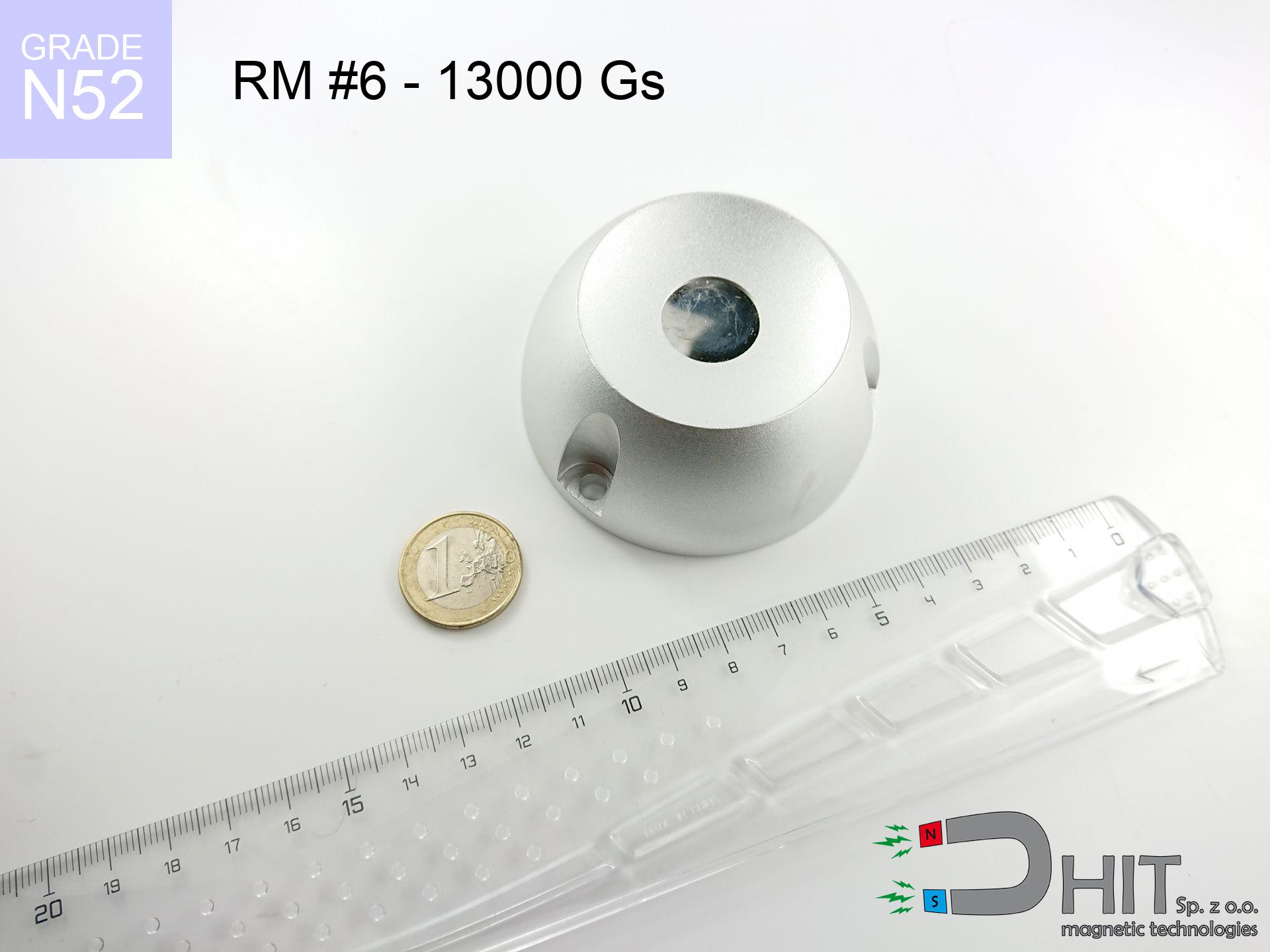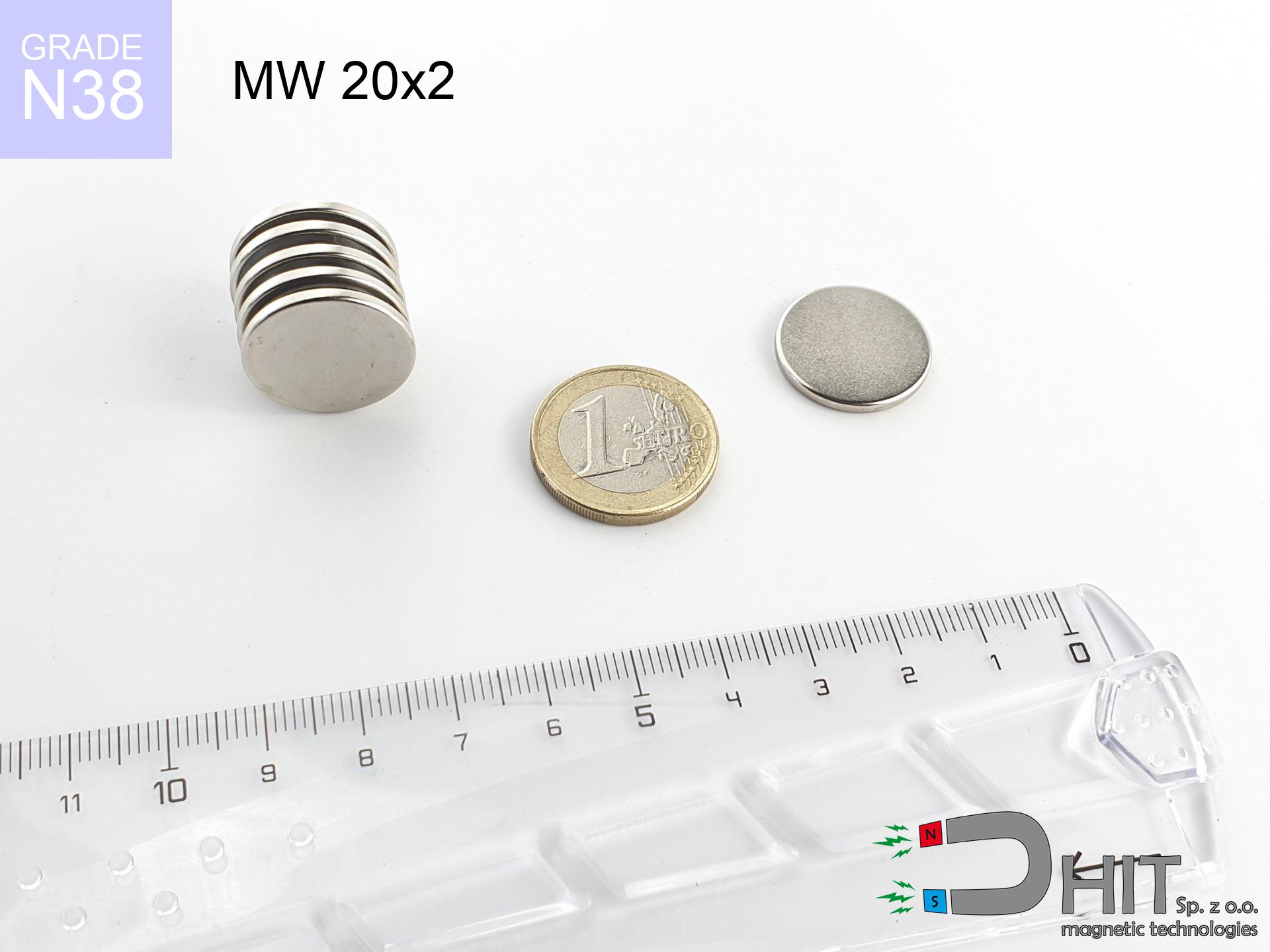RM R6 GOLF - 13000 Gs / N52 - magnetic distributor
magnetic distributor
Catalog no 280398
GTIN/EAN: 5906301814474
Weight
343 g
Magnetization Direction
↑ axial
Coating
[NiCuNi] Nickel
150.00 ZŁ with VAT / pcs + price for transport
121.95 ZŁ net + 23% VAT / pcs
bulk discounts:
Need more?
Contact us by phone
+48 22 499 98 98
or send us a note via
contact form
the contact form page.
Strength along with appearance of a neodymium magnet can be verified using our
force calculator.
Order by 14:00 and we’ll ship today!
Physical properties - RM R6 GOLF - 13000 Gs / N52 - magnetic distributor
Specification / characteristics - RM R6 GOLF - 13000 Gs / N52 - magnetic distributor
| properties | values |
|---|---|
| Cat. no. | 280398 |
| GTIN/EAN | 5906301814474 |
| Production/Distribution | Dhit sp. z o.o. |
| Country of origin | Poland / China / Germany |
| Customs code | 85059029 |
| Weight | 343 g |
| Magnetization Direction | ↑ axial |
| Coating | [NiCuNi] Nickel |
| Manufacturing Tolerance | ±1 mm |
Magnetic properties of material N52
| properties | values | units |
|---|---|---|
| remenance Br [min. - max.] ? | 14.2-14.7 | kGs |
| remenance Br [min. - max.] ? | 1420-1470 | mT |
| coercivity bHc ? | 10.8-12.5 | kOe |
| coercivity bHc ? | 860-995 | kA/m |
| actual internal force iHc | ≥ 12 | kOe |
| actual internal force iHc | ≥ 955 | kA/m |
| energy density [min. - max.] ? | 48-53 | BH max MGOe |
| energy density [min. - max.] ? | 380-422 | BH max KJ/m |
| max. temperature ? | ≤ 80 | °C |
Physical properties of sintered neodymium magnets Nd2Fe14B at 20°C
| properties | values | units |
|---|---|---|
| Vickers hardness | ≥550 | Hv |
| Density | ≥7.4 | g/cm3 |
| Curie Temperature TC | 312 - 380 | °C |
| Curie Temperature TF | 593 - 716 | °F |
| Specific resistance | 150 | μΩ⋅cm |
| Bending strength | 250 | MPa |
| Compressive strength | 1000~1100 | MPa |
| Thermal expansion parallel (∥) to orientation (M) | (3-4) x 10-6 | °C-1 |
| Thermal expansion perpendicular (⊥) to orientation (M) | -(1-3) x 10-6 | °C-1 |
| Young's modulus | 1.7 x 104 | kg/mm² |
Material specification
| iron (Fe) | 64% – 68% |
| neodymium (Nd) | 29% – 32% |
| boron (B) | 1.1% – 1.2% |
| dysprosium (Dy) | 0.5% – 2.0% |
| coating (Ni-Cu-Ni) | < 0.05% |
Ecology and recycling (GPSR)
| recyclability (EoL) | 100% |
| recycled raw materials | ~10% (pre-cons) |
| carbon footprint | low / zredukowany |
| waste code (EWC) | 16 02 16 |
Other offers
Advantages as well as disadvantages of neodymium magnets.
Pros
- They have stable power, and over nearly ten years their attraction force decreases symbolically – ~1% (in testing),
- Neodymium magnets are remarkably resistant to demagnetization caused by external interference,
- The use of an aesthetic layer of noble metals (nickel, gold, silver) causes the element to be more visually attractive,
- Magnets exhibit extremely high magnetic induction on the outer side,
- Due to their durability and thermal resistance, neodymium magnets are capable of operate (depending on the form) even at high temperatures reaching 230°C or more...
- Possibility of accurate forming as well as adjusting to complex applications,
- Huge importance in high-tech industry – they find application in HDD drives, electric drive systems, medical devices, as well as complex engineering applications.
- Relatively small size with high pulling force – neodymium magnets offer impressive pulling force in tiny dimensions, which makes them useful in compact constructions
Cons
- Brittleness is one of their disadvantages. Upon strong impact they can fracture. We advise keeping them in a steel housing, which not only protects them against impacts but also raises their durability
- Neodymium magnets lose their strength under the influence of heating. As soon as 80°C is exceeded, many of them start losing their power. Therefore, we recommend our special magnets marked [AH], which maintain stability even at temperatures up to 230°C
- Due to the susceptibility of magnets to corrosion in a humid environment, we suggest using waterproof magnets made of rubber, plastic or other material stable to moisture, when using outdoors
- We suggest a housing - magnetic mount, due to difficulties in creating nuts inside the magnet and complex shapes.
- Potential hazard to health – tiny shards of magnets pose a threat, in case of ingestion, which becomes key in the aspect of protecting the youngest. It is also worth noting that small components of these magnets are able to complicate diagnosis medical in case of swallowing.
- Higher cost of purchase is one of the disadvantages compared to ceramic magnets, especially in budget applications
Holding force characteristics
Maximum magnetic pulling force – what contributes to it?
- using a plate made of high-permeability steel, acting as a ideal flux conductor
- whose thickness equals approx. 10 mm
- with a surface cleaned and smooth
- without any insulating layer between the magnet and steel
- for force applied at a right angle (in the magnet axis)
- at room temperature
Practical aspects of lifting capacity – factors
- Gap (between the magnet and the metal), since even a very small clearance (e.g. 0.5 mm) can cause a reduction in force by up to 50% (this also applies to varnish, corrosion or dirt).
- Pull-off angle – note that the magnet holds strongest perpendicularly. Under sliding down, the holding force drops drastically, often to levels of 20-30% of the maximum value.
- Plate thickness – too thin sheet does not accept the full field, causing part of the power to be wasted to the other side.
- Steel type – low-carbon steel attracts best. Alloy steels lower magnetic properties and lifting capacity.
- Surface condition – ground elements ensure maximum contact, which improves force. Rough surfaces weaken the grip.
- Temperature influence – high temperature reduces magnetic field. Too high temperature can permanently demagnetize the magnet.
Lifting capacity was assessed by applying a smooth steel plate of suitable thickness (min. 20 mm), under perpendicular detachment force, whereas under attempts to slide the magnet the load capacity is reduced by as much as 5 times. Moreover, even a minimal clearance between the magnet’s surface and the plate reduces the holding force.
Warnings
Heat warning
Regular neodymium magnets (grade N) undergo demagnetization when the temperature exceeds 80°C. This process is irreversible.
Crushing force
Danger of trauma: The attraction force is so immense that it can result in blood blisters, pinching, and even bone fractures. Protective gloves are recommended.
Nickel allergy
Studies show that nickel (standard magnet coating) is a strong allergen. If you have an allergy, refrain from touching magnets with bare hands or opt for encased magnets.
Immense force
Handle magnets consciously. Their huge power can surprise even professionals. Be vigilant and respect their power.
Adults only
These products are not suitable for play. Eating a few magnets may result in them attracting across intestines, which constitutes a severe health hazard and requires immediate surgery.
Do not drill into magnets
Mechanical processing of NdFeB material poses a fire risk. Neodymium dust oxidizes rapidly with oxygen and is difficult to extinguish.
Magnetic interference
GPS units and smartphones are extremely sensitive to magnetic fields. Direct contact with a powerful NdFeB magnet can decalibrate the sensors in your phone.
ICD Warning
Life threat: Strong magnets can deactivate heart devices and defibrillators. Stay away if you have medical devices.
Cards and drives
Avoid bringing magnets close to a purse, laptop, or TV. The magnetic field can irreversibly ruin these devices and erase data from cards.
Shattering risk
Beware of splinters. Magnets can explode upon uncontrolled impact, launching sharp fragments into the air. Wear goggles.



![UMGGW 29x8 [M4] GW / N38 - magnetic holder rubber internal thread UMGGW 29x8 [M4] GW / N38 - magnetic holder rubber internal thread](https://cdn3.dhit.pl/graphics/products/umg-29x8-m4-gw-duf.jpg)




